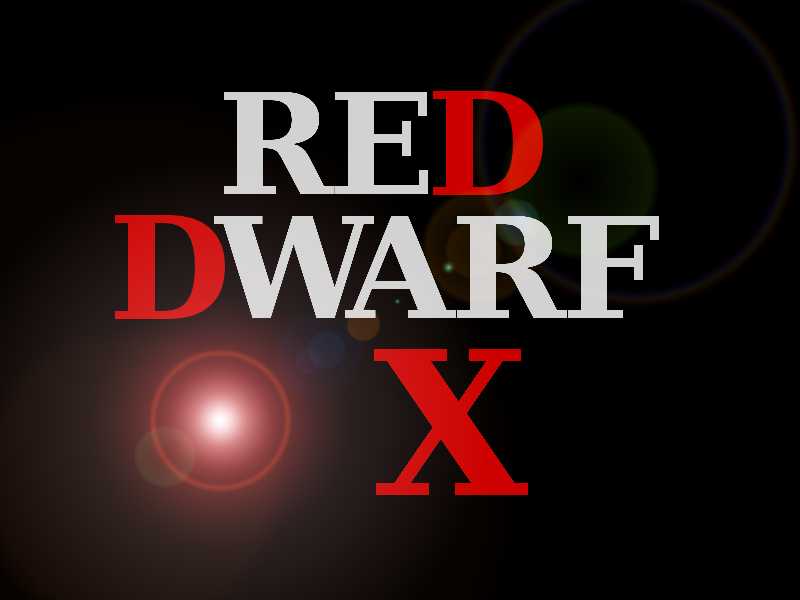Esperanto Pop Culture is Alive and Kicking
Esperanto is merely a language pipe dream of international communication and understanding, right? An almost-obsolete experiment that few people have heard of and even fewer actually use.
If that’s the case, then why has it cropped up so often in some of our favourite pop culture?
Before you disagree, let us cite our sources…
TV
Red Dwarf is one of our favourite examples of Esperanto in use. This British Sci-Fi comedy depicted Esperanto as being an international language, with signs on the beloved spaceship being written in both England and Esperanto - Level 147/Nivelo 147 as an example. Rimmer spent a good amount of time in the early series attempting to master Esperanto, resulting in phrases as useless yet loved as Monty Python’s My hovercraft is full of eels - in this case, Could you please send for the hall porter, there appears to be a frog in my bidet - Bonvolu alsendi la pordiston, laŭŝajne estas rano en mia bideo.
Photo via Wikimedia
Esperanto also appears in the background of The Jetsons as part of a homework assignment, there is a brief mention in The Simpsons of a former Esperanto club at Springfield Elementary, Frasier’s Roz Doyle was apparently fluent in Esperanto (episode Voyage of the damned), and West Wing’s President Bartlett was ‘accused’ of wanting students to learn ‘esoteric’ subjects that included Esperanto.
Film
Probably one of the best of examples of Esperanto being used in pop culture is Charlie Chaplin’s first spoken film, The Great Dictator. This 1940s classic was a satirical stab at Hitler, Mussolini and everything associated with fascism, antisemitism and the Nazis. In the film the ghetto walls are adorned with shops, street signs and posters in Esperanto, including the examples Vestaĵoj Malnovaj - old clothes, and Papervendejo - stationery store. Hitler himself was said to be a great opponent of the language of Esperanto, citing it as just one of the tools the Jews were planning on using to enslave the rest of the populace.
Some other fleeting mentions for Esperanto in film include: Blade: Trinity, where Esperanto is the second language of the fictional city the story is set in, Street Fighter, where the crime syndicate Shadaloo has posters and and signs written in Esperanto, and Gattaca, where all announcements given in the Gattaca building are in Esperanto.
Learning a new language? Check out our free placement test to see how your level measures up!
Music
Yes, Esperanto has even found its way into the music industry.

Photo via Flickr
Radiohead’s OK Computer album sleeve includes the Esperanto words injektilo - syringe; simbolo -symbol, and danĝera najbaraĵo -dangerous neighborhood. Sonic Youth’s Jim O’Rourke released an EP called SYR3: Invito Al Ĉielo - Invitation to Heaven, with all the titles and credits written in Esperanto. Michael Jackson used Esperanto in a promotional video for his album HIStory. And American composer Lou Harrison has used Esperanto titles and texts in many of his works.
Literature
George Orwell’s 1984 has been praised for its clever dystopian depiction of his perceptions of the direction politics was, or is, going in, but were you aware that Esperanto is a potential source of inspiration for the constructed language used throughout the story? Orwell, disturbed by the exposure he had to the language and viewing the political ‘element’ of Esperanto as an integral part of the totalitarianism he feared, used it as a basis for the controlling, lack of embellishment and passionless Newspeak.

Gif via Giphy
James Joyce’s Finnegan’s Wake is often included in lists of books most difficult to read, and it is also included in our run down of Esperanto in pop culture. There are entire passages of the book written purely in Esperanto - some readers even suggest reading the book with an Esperanto dictionary to hand to make things easier to understand.
Harry Harrison’s The stainless steel rat postulates a future where Esperanto is spoken, the clairvoyants in Isabel Allende’s The house of the spirits believed spirits only communicated in Esperanto and Spanish, and the population of Airhaven in Philip Reeve’s Mortal Engines speak a version of Esperanto called Airsperanto.
Video games
The opening video for Final Fantasy XI features a choral piece of music with lyrics sung in Esperanto (Memoro de la Ŝtono - A Memory of the Stone). The composer, Nobuo Uematsu, wanted to use Esperanto to symbolise the hope of developers that their game could contribute to global communication.

Photo via Youtube
The Elder Scrolls III: Morrowind has an in-game book titled N'Gasta! Kvata! Kvakis!, which is written in an altered form of Esperanto. The book is meant to be an arcane text on necromancy but is actually part of La Ranetoj, a newsletter published by the Stockholm Esperanto Society.
So, you’ll agree with us we hope, that there is definitely a presence of Esperanto in our pop culture that shows acceptance for this constructed language. Do you believe Esperanto really could be the international language of the future? If so, you’ll want to come back next time, when our final look at Esperanto provides some useful everyday phrases for you to become familiar with and maybe even pique your interest enough to consider taking on another language yourself. Until then!



